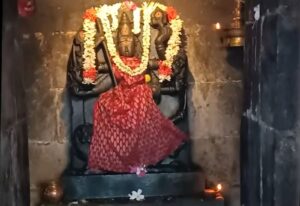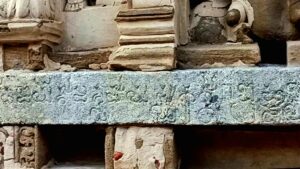Unveiling the 5 Mystical Wonders of Sacred Kanchipuram
Kanchipuram: The City of Temples, Silk, and Kovil Idli

Kanchipuram is globally known for three things: its magnificent temples, the exquisite Kanchipuram sarees, and the world-famous Kovil idli. Often referred to as the “Kashi of the South,” Kanchipuram is also known as the “City of a Thousand Temples,” where grand and imposing temples stand at short distances from one another.
Throughout history, every great southern dynasty, whether it was the Pallavas, the Vijayanagar rulers, or the Cholas, left their mark on Kanchipuram. These rulers played a significant role in the revival and flourishing of these temples, preserving their grandeur.
Each temple in Kanchipuram has a unique feature, and many of them date back 1,500 to 2,000 years. The timeless architecture and spiritual significance make this ancient city a must-visit destination.
How to Reach Kanchipuram by Bus, Train, and Flight

By Bus:
Kanchipuram is well-connected by road, and you can easily reach the city by bus. Tamil Nadu State Transport Corporation (TNSTC) operates frequent buses from major cities like Chennai, Bangalore, and Vellore. Private buses are also available, and the journey from Chennai takes about 1.5 to 2 hours, covering a distance of approximately 70-75 km.
By Train:
There is no direct train to Kanchipuram from many cities, but local trains do run to the town. The nearest major railway station is Chengalpattu, located 40 km away. Another nearby station is Arakkonam Junction, situated 35 km from Kanchipuram. If your city does not have a direct train to either of these stations, the nearest railway option is Tambaram Railway Station in Chennai, around 70-75 km away. From there, it takes about 1.5 to 2 hours to reach Kanchipuram by bus or taxi.
By Flight:
The closest airport to Kanchipuram is Chennai International Airport (MAA), which is around 75 km away. From the airport, you can hire a taxi or take a bus to Kanchipuram. The journey by road takes about 1.5 to 2 hours, depending on traffic conditions.
Where to Stay in Kanchipuram

There are several options for accommodation in Kanchipuram. You can find rooms near Ekambaranath Temple and Kamakshi Devi Temple, and the Kanchi Kamakoti Trust provides lodging facilities near the Kamakshi Devi Temple. Note that rooms cannot be booked online; you will need to book directly upon arrival.
Kanchipuram: One of India’s Seven Sacred Cities (Saptapuri)

Kanchipuram is revered as one of the seven most sacred cities of India, known as Saptapuri, alongside Ayodhya, Mathura, Dwarka, Haridwar, Kashi, and Ujjain. It holds the distinction of being the only Saptapuri located in South India. What makes Kanchipuram unique is its devotion to the three major deities: Shakti, Shiva, and Lord Vishnu, with temples dedicated to each.
This ancient city is often called the “City of Thousand Temples”, and though there are indeed countless temples in Kanchipuram, each one has its own significance and history. Visitors can explore the oldest temples in the city, including the sacred Shaktipeeth, and uncover the mysteries of some of the most remarkable Vishnu temples.
1.Ekambaranathar Temple: The Prithvi Lingam

One of the most significant temples in Kanchipuram is the Ekambaranathar Temple, home to the Prithvi Lingam, one of the five Panchmahabhuta Lingams in India, representing the element of earth. The Shivalinga here is made of sand, which is why it is called the Prithvi Linga.
In South India, Lord Shiva is revered as the presiding deity of the Panchabhutas, the five elements of nature—earth, water, fire, air, and sky. These elements symbolize the building blocks of the universe and the human body. The five temples associated with these elements are all in South India:
1.Chidambaram Temple represents the Sky element,
2.Shri Kalahasti Temple represents the Wind element,
3.Jambukeswarar Temple represents the Water element,
4.Tiruvannamalai Temple represents the Fire element, and
5.Ekambaranathar Temple in Kanchipuram represents the Earth element.
What makes these five temples even more fascinating is their geographical alignment—they are all located on the same imaginary straight line, adding scientific and spiritual significance to their placement.
Architectural Marvels
The Gopuram (entrance tower) of the Ekambaranathar Temple stands at an impressive height of 58 meters and exemplifies the grand South Indian temple architecture. The intricacies on the Gopuram, including carvings of Lord Shiva in the Nataraja dance posture, add to its beauty. A unique feature of the Shivalinga here is that it is not offered water; instead, it is anointed with jasmine-scented oil.

This temple was built by the Pallava kings in the 7th century, but its history is deeply connected with the legend of Goddess Parvati. It is said that when Goddess Parvati performed penance to win over Lord Shiva, she made a Shivalinga from sand under a mango tree, which still exists in the temple today. The mango tree is believed to be over 3,500 years old and has four branches that produce four different varieties of mangoes, each with its own distinct taste. The root of this ancient tree is enshrined inside the temple in a silver frame for devotees to worship.
Special Features of Ekambaranathar Temple


The temple complex also features 1008 Shivlingas, all carved from a single rock. This remarkable feat of craftsmanship is a testament to the architectural and artistic skills of the ancient builders. The temple spans 20 acres, making it the largest temple in Kanchipuram, and includes a 1,000-pillared hall, which has earned it the name Thousand Pillar Temple. The intricacy of the pillars is such that around 100 miniature temples are carved on a single pillar—a stunning example of ancient artistry.
2. Kamakshi Devi Temple: The Shaktipeeth of South India

The Shaktipeeth of Goddess Kamakshi Devi is located just 300 meters from the Ekambaranath Temple. The main entrance to the Kamakshi Devi Temple is through the eastern gate. Known as one of the most beautiful temples in Kanchipuram, it houses the idol of Goddess Parvati, worshipped here as Kamakshi Devi or Kamakoti.

This temple is one of the most important Shaktipeethas in South India and is revered as one of the 51 Shaktipeeths across India, where parts of Goddess Sati’s body are said to have fallen. Specifically, the bones or skeleton of Goddess Sati are believed to have fallen here, making this site deeply sacred. The temple’s Vimana (tower) is adorned with gold plating, adding to its divine aura.

The Kamakshi Devi Temple is one of the twelve main deity temples in India and is said to have been established by Adi Shankaracharya, one of India’s greatest spiritual reformers. Along with the Meenakshi Temple in Madurai and the Vishalakshi Temple in Kashi, it is one of the three most prominent temples dedicated to Goddess Parvati.
3. Vardharaja Perumal Temple: The Mysterious Vishnu Temple

Vishnu Kanchi is situated in the heart of Kanchipuram. To visit this area, you can take an auto-rickshaw for a nominal fare of ₹20/- for any destination within the town. One of the most significant temples in Vishnu Kanchi, and indeed in all of Tamil Nadu, is the Vardharaja Perumal Temple, dedicated to Lord Vishnu. This temple is renowned for its unique features and mystical history.

The temple is home to Athivardharaja Perumal, a form of Lord Vishnu whose idol is made from fig wood. What makes this idol particularly extraordinary is that it is submerged in the Ananta Saraswara Sarovar (sacred tank) and is brought out only once every 40 years for public viewing. After the last darshan on July 3, 2019, the next opportunity to see the idol will be in 2059. Amazingly, despite being submerged for decades, the wood does not decay or lose its color.

The name Athivardharaja reflects the significance of the idol—“Athi” refers to fig wood, and “Vardharaja” means the one who grants all kinds of boons. The prasadam offered at the temple is also special, with delicious varieties such as laddus and murukku prepared on-site. One of the temple’s most famous offerings is the Kovil Idli, a unique and world-famous dish that can only be found in the Vardharaja Perumal Temple.
Kanchipuram is celebrated for three things: its magnificent temples, the exquisite Kanchipuram sarees, and the world-renowned Kovil Idli.
4. Kailasanathar Temple: The Oldest Temple in Kanchipuram

The Kailasanathar Temple in Kanchipuram is dedicated to Lord Shiva and Goddess Parvati and is renowned as the oldest temple in the city. Built by the Pallava kings, the temple is constructed primarily from sandstone and granite, and its architecture and sculptures are awe-inspiring. Inside the temple, you will find 58 idols of Lord Shiva and Goddess Parvati, each depicted in different yoga postures. These postures are carved with exceptional detail, showcasing the Pallava era’s artistic excellence.

The inscriptions in the temple are written in Pali, a language that was prevalent at the time. However, what is astonishing is that today, no one can speak or understand Pali, leaving much of what is written here a mystery.
This temple, which is over 1,400 years old, offers unique features. For instance, Lord Shiva’s lingam here has 16 faces, each with a different posture and expression. The height of the lingam is also quite significant, making it distinct from other Shiva temples.

One of the remarkable aspects of the Kailasanathar Temple is the ancient natural colors used in the carvings. These colors, which were derived from natural sources like curd mixed with vegetable pigments, have remarkably survived over the centuries and can still be seen in some parts of the temple.
In addition to its stunning sculptures, the temple complex includes small caves where 58 sages are believed to have meditated. The king of the Pallava dynasty is said to have performed worship in the main temple while these sages engaged in penance.
Kanchipuram, often referred to as the city of 1000 temples, truly comes alive with spiritual vibrance, where you can often hear devotees performing bhajans on the streets, adding to the sacred atmosphere of the city.
Conclusion
Kanchipuram, a city steeped in history and spirituality, offers visitors an unforgettable experience with its magnificent temples, exquisite sarees, and delicious Kovil Idli. From the Panchabhuta Lingam at Ekambaranath Temple to the 3500-year-old mango tree, each temple tells its own story, making Kanchipuram a truly divine destination.
So, pack your bags and embark on a journey to Kanchipuram—the city of a thousand temples!


1 thought on “Unveiling the 5 Mystical Wonders of Sacred Kanchipuram”